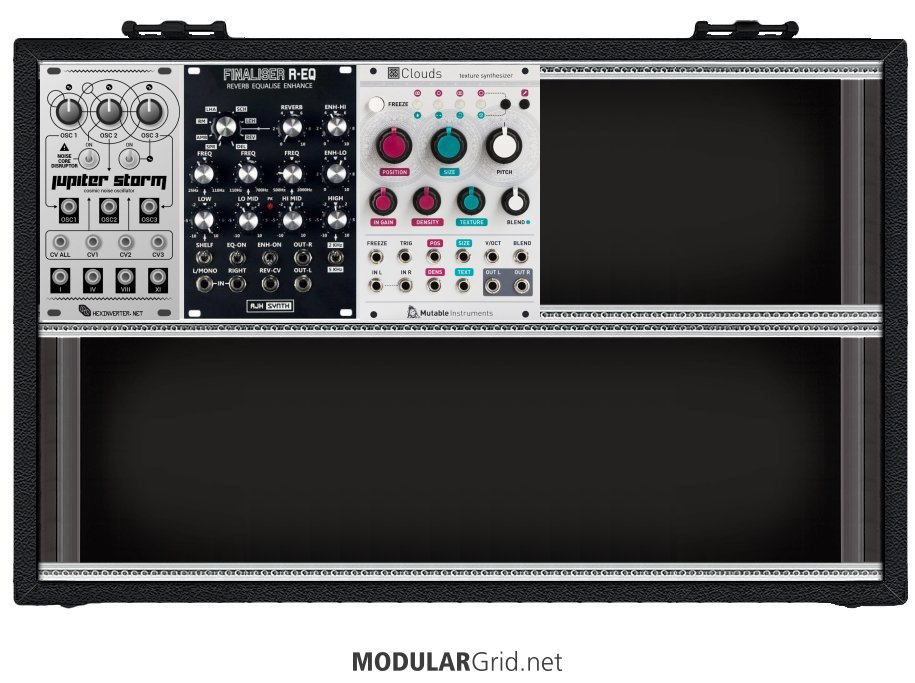Part of the problem is that you mention you want this for "techno production", but not which aspect of that, of which there are many. Is this for percussives? Bass? Leads and pads? All of it? If the latter, you're going to have quite a time of fitting something that versatile in that small a cab. NEVER start with a small cab like this...ALWAYS go with a cab that you think is too large. Invariably, you'll find that your "too large" cab is actually just fine or, if the goal is to create a unitized production device, it's STILL too small.
Second: "important" modules don't make a synthesizer work, if by "important" you actually mean "sexy". This is something I go over quite a bit on here. The ACTUAL things that make a synth a synth are the modules that seem UNimportant...VCAs, mixers, attenuation/inversion, and the like. Sure, it would be awesome if we could fill our cabs with nothing but edgy graphics, a bazillion blinkenlichts und twistenknobs, devices of arcane mystery and all of the rest of that marketing bullshit. But the truth is that you can spendspendspend on those sorts of modules and wind up with something utterly nonfunctional by neglecting the sleepy-looking modules that do all the scutwork.
Third: if the idea is to go from and to Ableton, you've got the wrong interface altogether. See the ES-8 (and expanders) from Expert Sleepers instead. These allow direct control via Ableton's internal CV tools and/or Silent Way or Volta, plus they have four return lines for audio, various timing signals to lock Ableton to the synth's clock, cues from your CV/gate/trig environment that can affect Live's operation, and so on. MIDI interfaces are all well and good, but there's other...and in this case, better...ways to do this.
Lastly, cost-effectiveness and function density are something any modular builder/user has to address. You need to define your necessary functions first (NOT the modules) and then sort out how you can make those happen in terms of modules and module combinations. That last bit is important, because a major aspect of modular synthesis comes from how the modules in your build work with each other, and not merely that you have X, Y, and Z modules. Plus, insisting on X, Y and Z modules before figuring out what they need to "play nicely together" can lead to some nasty cost and space surprises when you start factoring those actually-necessary modules into the mix.
I'd suggest tearing up the above and then going back and doing some basic research. What do the artists you mention use (that you know of)? How are they using those devices? How would you do that? Do you know your music well enough to understand how you would do that? Also, go and study some classic prebuilt synths and see how they generate the sounds they're known for, how their workflows optimize that process, and so forth. Plunging into this without the aid of extensive research will...well, just let us know when you put your money pit on Reverb, because that'll be where it winds up when you get frustrated at this little box that costs several grand but which can't accomplish jack-shit. Seriously.
-- Lugia
Hey, thanks too much for your answer.
I need the modular system first of all for leads, effects, drone sounds and sequences.
I've already made the social research what the artists i mention use and i made the rack i posted here based on the information.
But the problem is that their racks are way too expensive form me to start, so i just want something to start from, because i don't have that amount of money in one moment.
And i know the way the most synths create the sound, but the modular world seems for me a little different.
And i am not sure if the Ableton sequencing is the best, i just want to start from something to practice and make my own mistakes)


